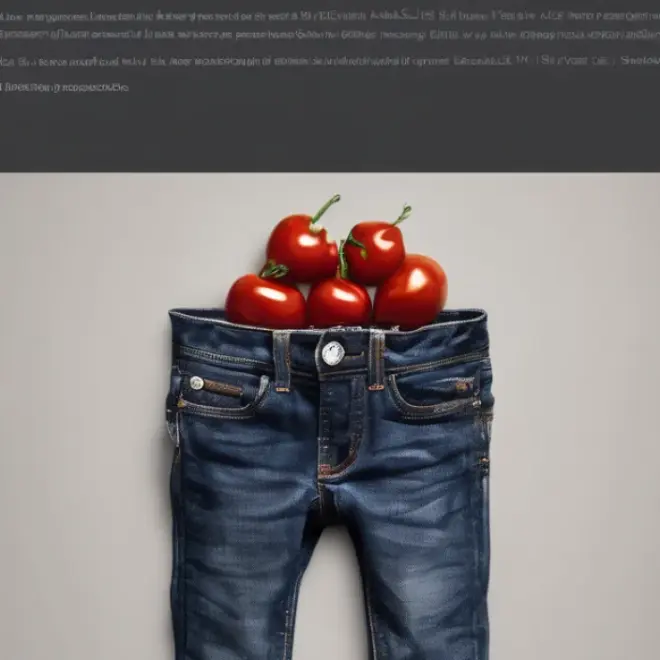Quick Summary: Discover easy methods to soften stiff tapered jeans for instant comfort and a broken-in feel. This guide offers simple washing, wearing, and care tips to make your new favorite jeans feel like old friends right away.
How To Soften Tapered Jeans: Your Essential Guide
New jeans can feel stiff and a bit unforgiving, especially tapered styles that are designed for a specific fit. It’s a common frustration when that crisp, new denim feel means less flexibility and comfort. You want your jeans to look great, but you also want to feel good wearing them. Don’t worry, breaking in that rigid denim doesn’t have to be a chore. This guide will walk you through simple, effective ways to soften your tapered jeans, making them feel like a well-loved pair from day one. Get ready for comfort without sacrificing style!
Why Do New Tapered Jeans Feel Stiff?
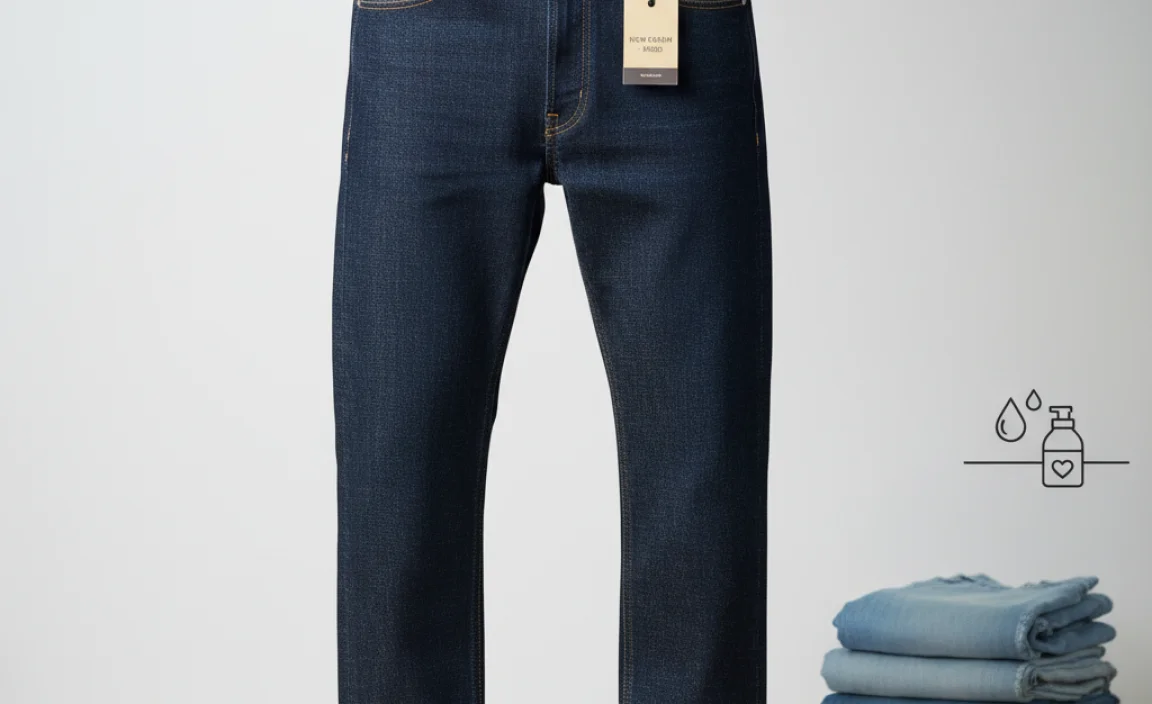
The stiffness you feel in new jeans is largely due to the denim fabric itself and how it’s processed. Denim is traditionally made from 100% cotton, which is a strong, durable fiber. To give jeans their structure, crispness, and to ensure they hold their shape, manufacturers often apply starch or sizing agents during the weaving and finishing processes. This makes the fabric more rigid and less pliable. Over time and with wear, these starches wash out, and the cotton fibers relax and soften, creating that comfortable, lived-in feel.
Tapered jeans, in particular, are often made from heavier denim weights to maintain their structured silhouette from hip to ankle. This can contribute to an initial feeling of stiffness. However, the good news is that softening them is entirely achievable with a few smart techniques.
Understanding Denim and Softness
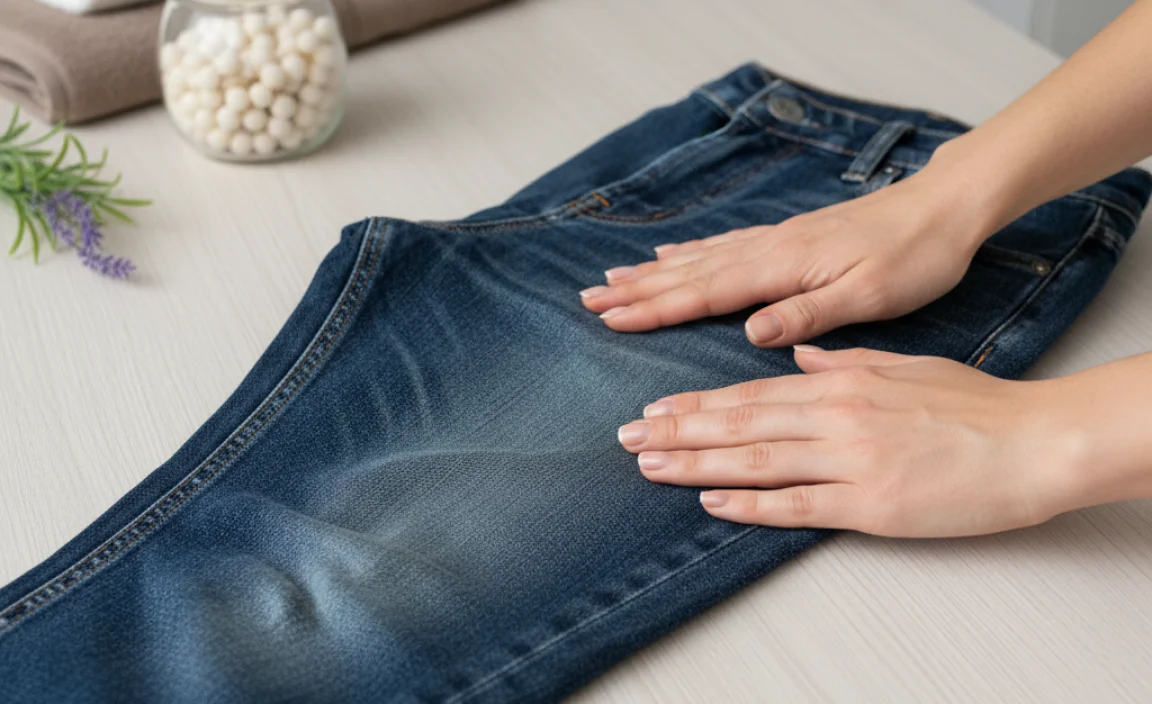
The softness of denim is subjective and often depends on the type of cotton used, the weave of the fabric, and any finishes applied. For instance:
- 100% Cotton Denim: This is traditional and durable. It breaks in over time, becoming softer and developing a unique fade with wear.
- Stretch Denim: Often blended with elastane or spandex, this denim can feel softer initially due to the synthetic fibers, but the core cotton still benefits from softening.
- Raw Denim: Unwashed and untreated, raw denim is typically the stiffest and requires a significant break-in period to achieve softness and personal fades.
The goal when softening tapered jeans is to loosen the cotton fibers and wash out any sizing agents without damaging the fabric or its color. This process mimics natural wear and tear but speeds it up significantly.
How To Soften Tapered Jeans: Step-by-Step Methods
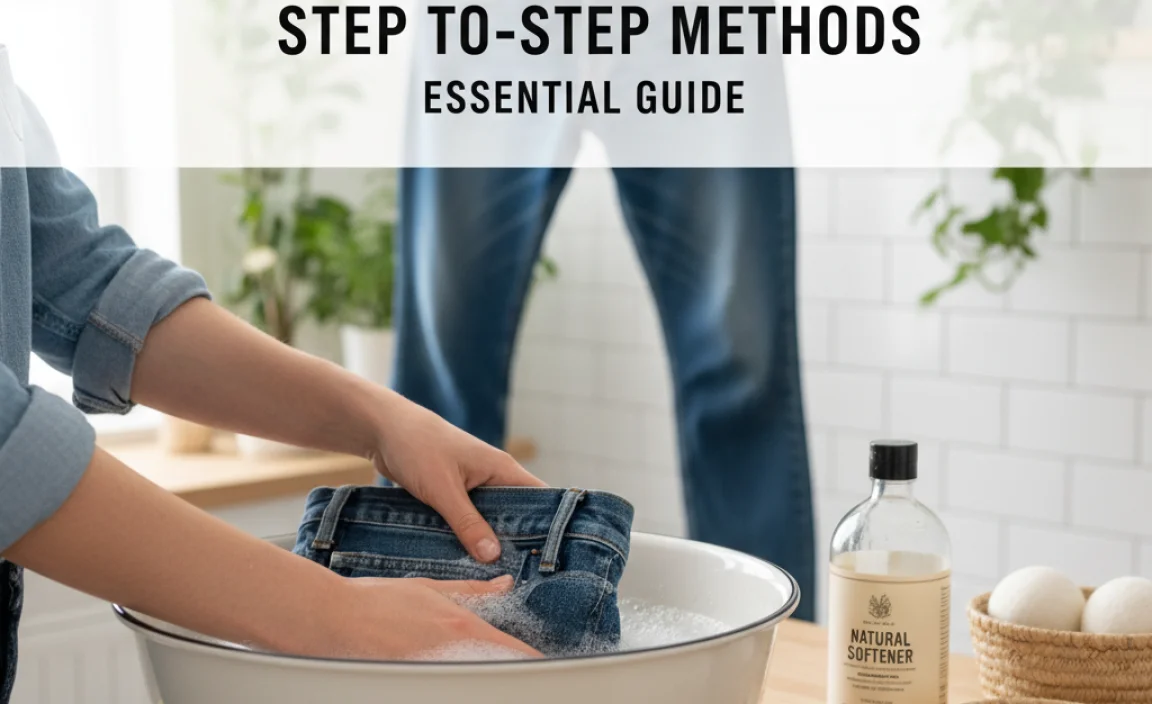
Here are the most effective ways to soften your tapered jeans. You can use one or a combination of these methods depending on how quickly you want results and how stiff your jeans are.
Method 1: The Gentle Wash (Machine or Hand)
Washing is the most straightforward way to introduce softness. The key is to be gentle.
Machine Washing:
- Turn Jeans Inside Out: This protects the outer fabric from abrasion and preserves color.
- Use Cold or Lukewarm Water: Hot water can shrink denim and fade colors more aggressively. Cold water is best for minimizing shrinkage and color loss.
- Choose a Gentle Cycle: Opt for a “delicates” or “gentle” cycle on your washing machine.
- Use a Mild Detergent: Avoid harsh chemicals, bleach, or detergents with optical brighteners, which can strip color. A detergent designed for darks or colors is ideal.
- Consider Adding Fabric Softener (Optional but Recommended): Use a small amount of a good-quality fabric softener. This is the quickest way to add immediate softness. Check out recommendations from consumer testing reports for effective, color-safe options [Consumer Reports Fabric Softener Guide].
- Double Rinse (Optional): An extra rinse cycle can help ensure all detergent and softener are removed, leaving the jeans feeling cleaner and softer.
- Avoid Overloading the Machine: Give your jeans plenty of room to move freely.
Hand Washing:
- Fill a Basin or Bathtub: Use cold or lukewarm water.
- Add Mild Detergent and Fabric Softener: Swirl gently to mix.
- Submerge Jeans: Turn them inside out and let them soak for 30-60 minutes.
- Gently Agitate: Swish the jeans around in the water, paying attention to the seams and thicker areas. Avoid vigorous scrubbing.
- Drain and Rinse: Drain the soapy water and refill with clean, cold water. Rinse thoroughly until no soap suds remain. You may need to repeat the rinse.
- Gently Squeeze Out Water: Do not wring or twist the denim, as this can damage fibers.
Method 2: The Dryer Trick
The dryer, particularly with dryer balls, can significantly speed up the softening process after washing.
- Remove While Damp: For best results and to minimize potential shrinkage, remove your jeans from the washing machine while they are still slightly damp.
- Add Dryer Balls: Toss in a few wool dryer balls or clean tennis balls. These help to agitate the fabric, separating the fibers and softening the denim as they tumble.
- Tumble Dry on Low Heat: High heat can be harsh on denim fibers and lead to shrinkage or damage. A low or medium heat setting is ideal.
- Check Frequently: Don’t over-dry. Remove the jeans once they are mostly dry but still slightly damp.
- Air Dry to Finish: Hang your jeans to air dry completely. This helps them retain their shape and avoids over-drying, which can make them stiff again.
Table: Washing Preferences for Softening Denim
| Method | Pros | Cons | Best For |
|---|---|---|---|
| Machine Wash (Gentle) | Quick, convenient, effective with softener. | Slight risk of color fade or minor shrinkage if not careful. | Most new denim, regular maintenance. |
| Hand Wash | Most gentle, best for preserving color and minimizing shrinkage. | Time-consuming, requires more effort. | Raw denim, delicate washes, very stiff jeans. |
| Dryer with Balls | Speeds up softening, reduces drying time, natural softening. | Requires attention to avoid over-drying, potential for minor pilling. | Post-wash step to enhance softness. |
Method 3: Wear Them! (The Natural Way)
There’s no substitute for genuine wear and tear when it comes to softening jeans. The more you wear them, the more they mold to your body and the softer the denim becomes.
- Casual Wear: Wear your tapered jeans around the house, for errands, or on relaxed outings.
- Flex and Stretch: Perform simple stretching movements while wearing them. Squatting, lunging, or simply bending your knees can help the fibers loosen up.
- Avoid Strenuous Activity Initially: While you want to wear them, avoid activities that could cause excessive stress or potential damage when they are still very stiff.
- Layering: Wearing thin leggings or tights underneath can help slightly accelerate the softening process by creating friction against the denim.
Method 4: The “Rough House” Technique (Use Sparingly)
This method involves more active manipulation to break down the fabric fibers. It’s more aggressive and should be used cautiously, especially with darker washes or raw denim.
- Heavy Wear: Wear the jeans for physically demanding, but non-strenuous, activities for a few hours. Think gardening, a long walk, or helping a friend move light furniture.
- Sit on Them: Sitting on your jeans, especially on a rough surface like a concrete floor or hard wooden chair, can help break in the seat and thigh areas.
- Bend and Stretch: Actively move in them – squat deeply, do leg kicks, and twist your torso.
What to Avoid When Softening Jeans
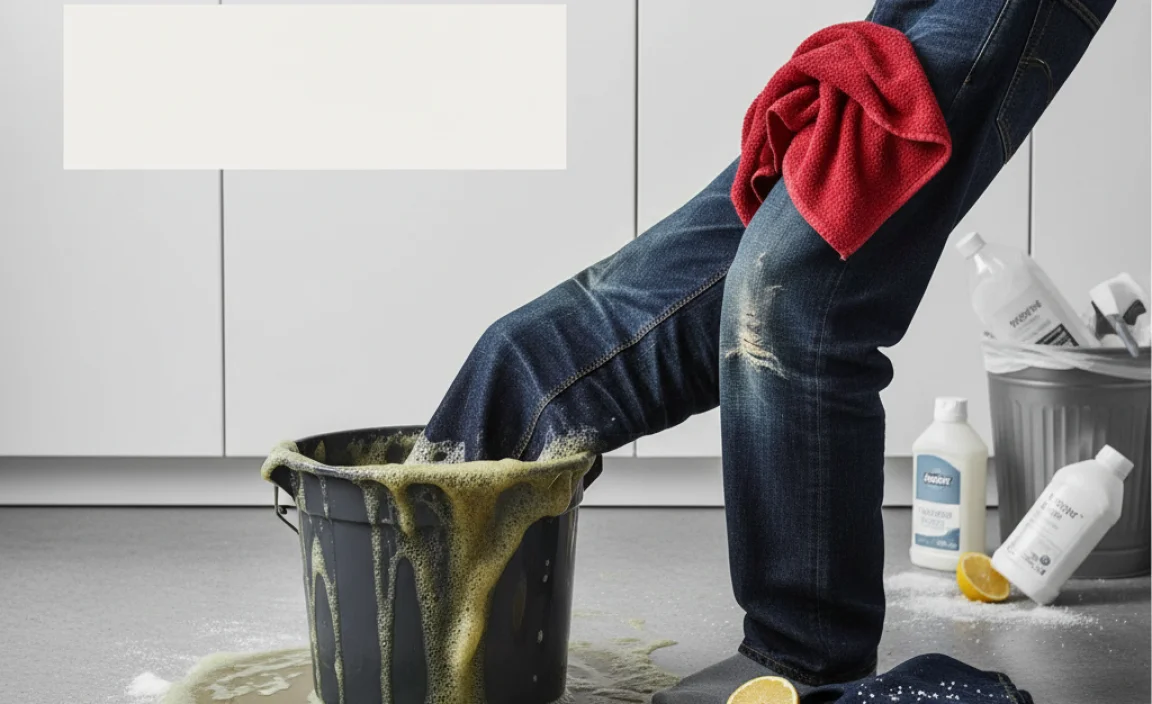
Certain practices can damage your jeans rather than soften them. Keep these in mind:
- Hot Water Washes: Can cause significant shrinkage and color loss.
- Harsh Detergents and Bleach: Will degrade denim fibers and strip dye.
- High Heat Drying: Leads to shrinkage and makes denim brittle.
- Aggressive Scrubbing or Wringing: Can damage the fabric weave.
- Over-Washing: Too much washing can wear down the denim prematurely.
- Ironing (Immediately After Washing): While you can iron jeans if needed for a crisp look, ironing stiff, damp jeans on high heat can further set creases and make them feel less soft. Air drying them first is usually better.
Tips for Maintaining Softness
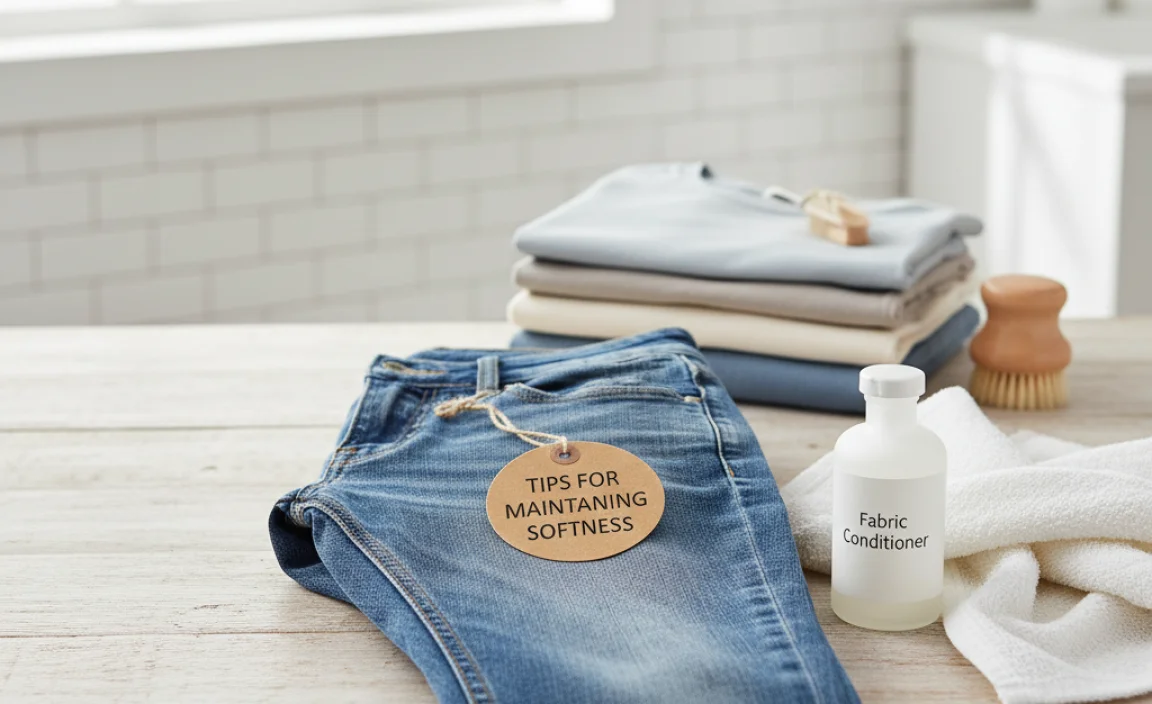
Once your tapered jeans are soft, you’ll want to keep them that way.
- Wash Less Frequently: Only wash your jeans when they genuinely need it. Spot cleaning or airing them out can often suffice.
- Wash Inside Out: Always turn them inside out to protect the color and outer surface.
- Use Cold Water and Gentle Cycles: This is the golden rule for preserving denim.
- Air Dry When Possible: The dryer is convenient, but air drying is gentler on fibers and helps denim retain its shape and softness. If using a dryer, opt for low heat and remove them slightly damp.
- Avoid Over-Drying: If you must use a machine dryer, remove jeans while they are still slightly damp and let them finish air drying.
Table: Quick Softening Methods Comparison
| Method | Effort Level | Speed | Potential Risks |
|---|---|---|---|
| Gentle Wash with Softener | Low | Fast (1 wash cycle) | Slight color fade, over-reliance can reduce denim durability. |
| Wear & Stretch | Medium | Slow (days to weeks) | Can be uncomfortable initially, risk of overstretching in key areas. |
| Dryer Balls | Low (post-wash) | Medium (shortens drying time) | Risk of over-drying if not monitored. |
| “Rough House” Technique | High | Moderate (1-2 days of focused wear) | Higher risk of color fade, potential for uneven softening or premature wear. |
Can I Soften Tapered Jeans Without Washing?
Yes, you can initiate softening without a full wash, though it’s less effective at removing stiffness caused by sizing agents. The primary method here is wearing them. The natural friction and movement from your body will gradually relax the cotton fibers. You can also try flexing and stretching in them while they’re dry. For a more aggressive approach without a wash, you could try spot-treating seams by gently rubbing them with your hands, or even using a heavy-duty denim brush very lightly on the fabric surface, but proceed with extreme caution to avoid damage.
How Long Does it Take to Soften Tapered Jeans?
The timeframe varies significantly based on the method and the denim itself. Simply wearing them can take weeks or even months of regular use to achieve significant softness. A gentle wash with fabric softener can provide noticeable softness within a few hours. Using the dryer balls after washing can enhance this effect. Combining methods—like washing, using dryer balls, and then wearing them regularly—is often the fastest and most effective route to achieving that ideal comfortable feel.
Will Softening Shrink My Tapered Jeans?
Washing and drying are the main culprits for shrinkage. To minimize this:
- Always use cold water.
- Use a gentle or cold cycle.
- Avoid high heat in the dryer. Instead, tumble dry on low and air dry them the rest of the way.
- For raw or rigid denim, consider hand washing and air drying exclusively to preserve the original fit.
If concerned about shrinkage, it’s often best to rely more on wearing the jeans and gentle washing techniques rather than aggressive methods like hot water or high heat drying. For more precise information on minimizing shrinkage, consult denim care guides from reputable brands or manufacturers, such as those found on the Heddels blog, which is a great resource for denim enthusiasts.
FAQ: Your Tapered Jeans Softening Questions Answered
Q1: My tapered jeans are dark indigo. Will softening methods fade them?
A: Yes, any washing or aggressive friction will cause some degree of color fading, especially with dark dyes. To minimize fading, always wash inside out in cold water with a color-safe detergent and consider using fabric softener. Wearing them is the gentlest way to soften without significant color loss.
Q2: Can I use a steam iron to soften my jeans?
A: A steam iron can help temporarily relax fibers and remove creases, contributing to a softer feel. However, it’s not a primary softening method. If you iron your jeans, do so when they are slightly damp, on a medium heat setting, and avoid pressing too firmly, which can make them feel stiff.
Q3: What if my tapered jeans are made of raw denim?
A: Softening raw denim requires patience. The best approach is to wear them as much as possible and allow them to shape to your body naturally. If you must wash them, do so sparingly in cold water by hand and air dry without any heat. Avoid fabric softeners, as they can interfere with the unique fades raw denim develops.
Q4: How do I soften the knee area if it feels particularly stiff?
A: The knee area often creases and stiffens. After washing, try flexing your knees repeatedly while the jeans are still slightly damp. You can also gently rub the fabric in the knee area with your hands or use a soft brush. Wearing them and doing squats will also help break them in.
Q5: Is it okay to use a lot of fabric softener?
A: While fabric softener can make jeans feel softer, using too much can build up on the fibers, trap dirt, and potentially weaken the denim over time. It can also affect the way denim fades. It’s best to use fabric softener sparingly, following the product’s recommendations, and ensure it’s rinsed out completely.
Q6: Can I soak jeans in salt water to soften them?
A: Soaking jeans in salt water is sometimes suggested for raw denim to help set the dye and reduce bleeding. It can also make the denim feel slightly crisper initially, rather than softer. For softening, it’s not the most effective method and can be harsh on certain dyes. Gentler washing or wearing is preferable.
Conclusion: Embrace Your Softened Tapered Jeans
Softening stiff tapered jeans is all about patience and using the right techniques. Whether you’re opting for a gentle wash cycle, incorporating dryer balls, or simply committing to regular wear, the goal is to break in the denim fibers for maximum comfort without compromising the integrity or style of your jeans. Remember to always treat your denim kindly – wash inside out in cold water, use mild detergents, and avoid high heat. With these methods, you can transform that initial stiffness into a perfectly comfortable, well-fitting pair of tapered jeans that you’ll want to wear every single day. Enjoy the journey to denim comfort!









